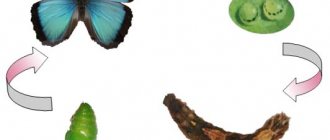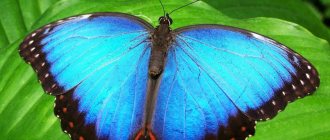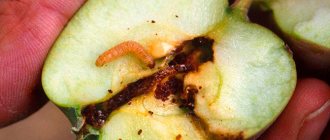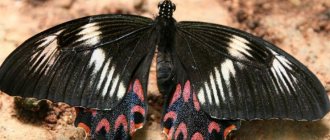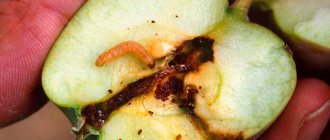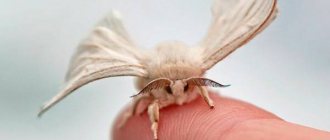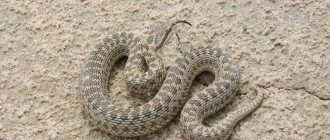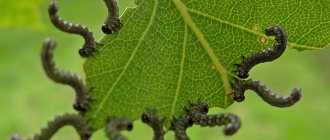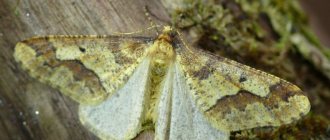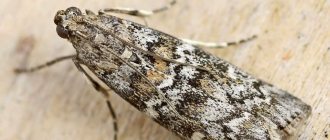Many will agree that butterflies are the most beautiful creatures on the planet. Their larvae - caterpillars - are not inferior to them. Most of them acquired a variegated color to protect themselves from enemies, and many species produce poison for protection. But the most poisonous caterpillars in the world are not always brightly colored. They often skillfully disguise themselves as their environment. We go to gardens and forests to get closer to the beautiful but dangerous butterfly larvae.
The most poisonous caterpillars on the planet:
1
Coquette / Megalopyge opercularis
When you see such a creature in nature, you might not immediately guess that it is a caterpillar. The larva, covered with a kind of fur, looks more like a furry animal. This is the larva of the flannel moth, native to the southern states of the United States.
But it is not recommended to iron it. Under its hairs are poisonous spines that release a toxic substance when touched. The touch is quite painful, and after about five minutes redness may appear.
This feature is necessary for protection. Attentive nature lovers have noticed that the hairy caterpillar bears a striking resemblance to Donald Trump's hair.
2
What are the threats from insects?
Nature never ceases to amaze people with the wonders of flora and fauna. Not only are beetles sometimes very unpleasant-looking, but they can also be deadly to others. How the threat manifests itself:
- insects become carriers of infection;
- the creature poisons the blood of the victim upon close contact.
The science of entomology deals with the study of insects. The individuals themselves were called “insects”, thanks to Carl Linnaeus, the author of the animal classification system.
Saddle Caterpillar / Sibine stimulea
The larva of a gray butterfly from the slug family has a rather menacing appearance. On the green body there are brown spots along the edges, and in the middle there is a spot with a white border, resembling a saddle in shape.
They grow up to 3 cm during the development period. At both ends of the body there are two pairs of horns covered with hairs. At the tips of the hairs there are glands that produce a toxic substance.
The touch causes pain, which is comparable in strength to a bee sting. A rash appears at the site of contact, accompanied by headache and nausea. This rash will last for two days. It defends itself with its poisonous horns, and itself eats many types of plants.
3
The strangest creature
A terrible insect from the world of cicadas is called the Brazilian humpback. The ugliness of the creature is frightening due to the strange structure of the head with bumpy growths resembling antennas. The balls, which look like huge eyes, are actually chitinous structures designed for camouflage on plants. Due to its small dimensions (body length about 2 cm), this native of the Brazilian jungle is difficult to see with the naked eye.
It is interesting that the terrible insect has long been considered a figment of the imagination of the German sculptor who painted the insect. Then the unusual creature was photographed in the tropical world of Brazil.
Parasa indetermina
The larva of the Parasa indetermina butterfly, due to its unusual appearance and ability to burn, received the nickname “Burning Rose”. It grows no more than 2.5 cm, and its range is limited to the North American continent.
She has bright colors and various stripes can be seen on her body. Red and yellow spots. In addition, for protection, it has a number of processes on which there are burning tubercles. When touched, the tips of these tubercles break off, and severe pain and irritation are felt at the point of contact.
It feeds on the leaves of fruit trees, especially often affecting various varieties of apple trees. Also found in deciduous forests.
By the way, on our website most-beauty.ru there is an interesting article about the most beautiful butterflies in the world.
4
Spiny oak slug caterpillar / Euclea delphinii
Experts note that the larva of this species of butterfly is not too dangerous, but during its evolution it has also developed protective mechanisms. They reach a length of no more than 1.5 cm, and feed, if you look at the species name of the butterfly, on oak leaves.
The body color is quite variegated. Throughout the body there are small outgrowths, at the tips of which a special substance is concentrated. Once in contact with the skin, this mucus causes a rash. These shoots are spiny. Touching them is quite painful. The touch is quite painful.
In addition to oak trees, such lumpy creatures can be found on willows and maples. She loves to eat both the leaves and fruits of garden trees, thereby harming agriculture.
5
Habitat
Most often the caterpillar can be found on the ground, but many representatives have begun to develop under water. For example, the Hawaiian moth caterpillar has spread on land and in water.
Caterpillars are also divided into two types, according to which they lead either a secretive or free lifestyle. Caterpillars, which lead a free lifestyle, live on the foliage of plants and are large in size. Secretive caterpillars include a number of varieties:
Volyanka / Orgyia leucostigma
Small butterflies have settled on all continents, and in total there are more than 2,700 species. Particularly large populations are found in the tropical and subtropical zones of Southeast Asia and the African continent.
The caterpillars of many species of mothwort are poisonous. There are hairs on the body that contain a toxic substance. During periods of mass reproduction, such larvae can cause great harm to animals and humans. The poison causes inflammation of the respiratory tract, affects the mucous membrane of the eyes and causes a rash on the skin.
In addition, they are polyphagous and cause great harm to garden crops. They develop both on trees and on shrubs and herbaceous plants.
6
Threatening flies
- The venom of the world's most feared insect, the tsetse fly, poses a mortal threat to all mammals. Although the venom is free of toxins, the insect's sting injects parasites, the causative agents of sleeping sickness, into the enemy.
- The scorpion fly is a strange victim of genetic mutation. The world's oldest insect looks like both a scorpion and a wasp, with the stinger being the genitals of a creepy hybrid.
Common Dipper / Tyria jacobaeae
This species acquires toxicity as a result of eating a poisonous plant - Jacobea vulgaris. The ability to eat plantings of a poisonous plant is widely used by farmers in Australia and New Zealand to destroy a dangerous weed.
Because of the red coloring of her body, she is also called the Bloody Bear. The caterpillar eats the plant and becomes poisonous itself. They are not dangerous to humans, but pose a threat to birds that eat them.
A small number of these butterflies, and, consequently, caterpillars, were discovered in the Mozhaisk district of the Moscow region. Over the past 40 years, there has been a decline in the number of this butterfly species, which is why many states have adopted laws to protect the species.
By the way, on our website most-beauty.ru there is a fascinating article about the most poisonous and dangerous insects in Australia.
7
Burdock - a lover of overseas travel
Vanessa cardui, wingspan 47-65 mm
The burdock butterfly, or thistle, is often confused with the urticaria. They are really similar, but, unlike the urticaria, the burdock is much larger and has black, rather than blue, spots on its hind wings. The number of this species varies from year to year. For example, in 2009 there were especially many of them. For the winter, burdocks fly to North Africa, and then return to the European continent and begin breeding.
wallhere.com
Females lay one egg each on thistle, burdock, coltsfoot, yarrow or nettle. After hatching, the caterpillar makes a shelter out of leaves. Over the course of her life, she can change at least 7 of them. Depending on the food plant, the color of the caterpillars will also change. At the dacha, they will help fight weeds and become food for birds.
In the southern regions of Russia, burdock caterpillars can infect tomatoes, eggplants, soybeans, and melons.
How to attract a burdock. Plant cosmos, asters, saplings, David's buddleia, phlox and other butterfly-attractive plants in your flower beds
Thickets of thistles near the site will also attract the attention of thistles
Redtail / Calliteara pudibunda
The distribution area of this butterfly is quite wide, but is divided into two large regions. The first, these are the countries of Western Europe, is found in Belarus and Crimea.
The second is the eastern regions of Russia. Widely settled in Siberia and Primorye. It is also called Shy Paw. The entire body of the caterpillar is covered with hairs, and the color is quite varied. There are red, pink, as well as brown and gray individuals. But they all have a small red ponytail at the back.
Touching human skin causes an allergic rash and redness. A furry caterpillar will not do much harm, but it will be unpleasant.
8
Redtail
The range of this individual includes all of Russia, with the exception of the distant North. The caterpillar can have different colors: from light gray to dark brown. Found in bukovina and oak forests. A distinctive feature of this species is the presence of a tuft of long hairs of crimson, red or crimson colors sticking out in the back of the body. Which is where the name came from. Contact with hairs on the body can lead to an allergic reaction, rash and itching.
Purple Hawkmoth / Mimas tiliae
The small caterpillar reaches an average length of no more than 6 cm at the peak of development. The species of this inconspicuous butterfly was discovered by Carl Linnaeus in 1758.
The body is rough, and there is a horn on the tail. This horny process has a protective shield. Development begins in early summer. During this period, they can be found on the branches of wild and fruit trees. There are especially many of them on linden, birch, and various types of alder. By the time of pupation, the body color completely changes.
It is not dangerous in itself, but if it crawls across the body, it will leave a bright mark. There are substances on her body that cause an allergic reaction. It is most difficult for allergy sufferers and people with weakened immune systems.
9
Features of development
Siberian silkworm caterpillar and butterfly
The butterfly flight begins in the second half of July and lasts about a month. Mating occurs on the fly. The male dies soon after fertilization, the female looks for a favorable place to lay eggs. Attaches them to tree bark and leaves using a special sticky substance that is released along with the eggs.
The development of the larva inside lasts up to 22 days; under favorable conditions, the young offspring of the Siberian silkworm appear already on the 13th day. First instar caterpillars actively feed on needles and grow quickly. During the period from August to September, they increase significantly in size, and the chitinous cover becomes denser. The cycle in the photo. At the end of September, the caterpillars crawl under the bark and forest floor and remain for the winter.
With the onset of warmth - in May, the larvae rise to the crowns, where they live and feed throughout the warm season. The caterpillars undergo the second wintering at the fifth or sixth age. They continue to develop in May and pupate by the end of June. The development of a butterfly in a cocoon lasts about a month. Externally - a motionless creature, inside - the most complex processes of transformation take place. Young butterflies appear in early September. Their task is to find a secluded place for wintering. Below is a photo of the young.
Saturnia io / Automeris io
The beautiful peacock butterfly is found in Canada and the United States. The entire body of the caterpillar of this butterfly is covered with peculiar greenish thorny pom-poms.
She herself is light, and does not grow more than 4–5 cm. You can only admire this view from afar, but under no circumstances pick it up or even touch it. After contact with the thorns, poison penetrates the body. Toxic substances cause redness, pain at the injection site and can even cause the development of dermatitis.
It looks like a very cute and safe creature. But this is yet another proof that beauty is deceptive.
10
How common are skin problems?
Caterpillars and moths are rare causes of skin diseases. It is difficult to determine the number of victims, as many of the reactions are mild and are not reported to health authorities. In addition, in many cases the source of the reaction is incorrectly identified.
- Some lepidopteran species are fertile in the summer, which leads to “epidemics” of adverse reactions. For example, summer outbreaks of dermatitis from gypsy moth caterpillars in some parts of the United States.
Witch moth / Phobetron pithecium
The most peculiar and unusual caterpillar in wildlife usually lives on fruit trees in orchards. Because of its unusual appearance, it is also called the “slug monkey.”
The entire body is covered with thick hair, and the body structure differs from the usual physique of butterfly larvae. Most often, the hair is light brown in color, which darkens with age.
Nature took care of protection, because not every bird will decide to peck such a “monster”. This type of larva can be perceived in different ways, but the hairs contain a toxic substance. If it comes into contact with the skin, it causes redness that goes away after a few days.
The world's best concealer
The title of the best camouflage was rightfully won by the Stick insect - a giant insect called the “spiny stick”. You can meet the horror story in Australia or the USA, even in Russia. Nature rewarded the most terrible master of camouflage with a long body (12-20 cm) with stick-leaf legs.
The monster, covered with green spines, spends most of its time trying to blend in with the elements of its environment. When threatened, the insect takes a fighting pose, putting its limbs forward, which makes it look like a real scorpion. The stick insect repels predators by releasing a chemical whose aroma reminds humans of peanut butter.
Hickory Dipper / Lophocampa caryae
Another fluffy, dangerous caterpillar that lives in North and Central America. The white fluffy creature looks completely harmless.
It does not have poison, but the hairs have barbs that can damage the skin. Inflammation is observed in the damaged areas. The area becomes itchy and later develops an unpleasant rash. One of the few that can bite.
It grows no more than 3 cm. Development occurs in late spring and early summer. People with allergies should especially stay away from them.
12
Invasion of poisonous ants
- After meeting on the paths of the tropics with the largest ant in the world, a very painful memory remains. The insect was nicknamed the bullet ant for its longest sting (3.5 mm), which is longer than the body of the insect itself.
- The harvester ant from America has the most toxic poison in the world. When attacking a victim, it grabs it with its pincers to inject a copious portion of poison. The pheromones released in this case become a signal for relatives.
- American Siafu ants managed to occupy even the tropics of Asia. The bite of the most terrifying-looking insect can be fatal, especially for the youngest or oldest people.
Saturnia Maya / Hemileuca maia
In the photo you can see what the caterpillar of a beautiful butterfly looks like. But the larva disgusts her and discourages her from getting to know each other better.
The entire body is covered with hollow spines, which are connected to poisonous reservoirs. When examined under a microscope, you can see that these spines are covered with multiple hairs. They themselves are dark, but the caterpillar's body is light.
The poison causes severe itching and burning in the victim. After the initial external symptoms, headache and nausea begin. From spring to mid-summer they sit in large groups on oak branches and willows.
13
Lonomia / Lonomia Obliqua
One of the most poisonous caterpillars on the planet is the larva of the Peacock butterfly, found in Latin America. Reaches a length of 5.5 to 8 cm. The entire body is covered with fine hairs. They are also called the Lazy Clown.
Numerous studies have proven that lomonia can produce toxic substances dangerous to human life and health. For the first time, attention was paid to toxin poisoning in 1983, when dangerous creatures caused a massive epidemic in the Brazilian state of Rio Grande do Sul.
A poisonous caterpillar from South America has caused the death of many people. Fatal outcomes after encountering it are recorded especially often in the south of Brazil.
14
List of the most dangerous butterflies
To avoid unpleasant consequences from contact with butterflies fluttering from flower to flower, you need to know which of them are poisonous. The toxic substance enters human skin through direct contact and transfer from the wings, paws, and body.
The contact area swells and begins to itch. Allergic reactions such as rapid heartbeat and shortness of breath are possible. If the toxin gets into the mucous membranes of the nose, mouth, or eyes, even more serious complications arise.
Butterflies that pose a threat to humans are found not only in the tropics. They live all over the planet, and live in Russia.
Lonomiya
According to biologists, Lonomys are the most dangerous butterflies in the world. Their poison can cause kidney failure in a person, disrupt the structure of the blood and even lead to death. These insects live in wooded areas of Latin America.
Lomonia
Lonomys have learned to camouflage themselves well into the landscape. At rest, the butterfly is indistinguishable from a dried leaf, and this increases the risk of contact with it.
Sailboat antimah
This individual is also not immediately noticeable in the forest. The brown-orange wings of the swallowtail are decorated with black spots and reach a span of 20 cm. Poisonous butterflies live in Uganda.
You don't even have to come into contact with an insect to get a burn. Sensing danger or being under stress, the sailboat releases a toxic substance into the air with an unpleasant, repellent odor.
Sailboat antimah
Butterfly Emperor
This insect is called the green emperor in Uganda because of the correspondingly colored veins that decorate its yellow-brown wings. For humans, the butterfly is dangerous because it can attack with lightning speed if it feels threatened. During an attack, the insect releases a cloud of toxic substance that causes severe burns.
Attention! The aggressiveness of the green emperor is even mentioned in the Guinness Book.
Butterfly Emperor
Common shemale
In the eastern part of Russia there is a butterfly with an interesting color. The milky front wings are covered with brown shapeless spots of different sizes. The hind ones are bright, orange-red, with blue polka dots.
Attention! Of the lepidopteran species living in Russia, the bear is considered the most poisonous butterfly.
You can encounter it at dusk and at night. The yellowish toxin secreted by insects provokes not only skin allergies - the mucous membranes become inflamed and conjunctivitis develops.
Common shemale
Danaid monarch
The main habitat of nymphalids is North America, but these poisonous butterflies are also found on other continents. This is caused by the ability of insects to make long flights. Orange wings with veins and black edging often flash in the flower beds of Russian summer residents.
Danaids prefer to feed on the swallowtail, the juice of which is poisonous. Toxins accumulate in the insect's body, making it dangerous to enemies and humans.
Danaid monarch
Pine silkworm / Thaumetopoea pinivor
In Russia, poisonous caterpillars are not as dangerous as those in South America, but they can also cause a lot of trouble. This type of silkworm received its name due to the massive migrations of larvae. They live on pine needles, which they feed on.
During development, lush hair appears on the body. Adult individuals break these hairs themselves, resulting in the formation of a kind of dust. When such dust gets on the mucous areas and skin of a person, a strong burning sensation begins.
Then the skin turns red and severe itching begins. Symptoms appear within a few weeks. After contact, you should seek medical help.
15
How to treat
Treatment of local reactions includes washing the skin with soap and water. You should use a non-contact dryer, such as a hair dryer. Applicable:
- cooling – ice pack;
- topically – isopropyl alcohol;
- removing caterpillar hairs using adhesive tape;
- A suspension of baking soda or calamine lotion soothing the skin is applied to the site of the caterpillar bite.
Treatment of systemic reactions is symptomatic. Treating severe reactions is similar to treating insect bites .
General first aid measures include:
- Carefully remove the caterpillar with tweezers (do not use your bare hands to remove or crush the insect).
- Sticky tape (especially duct tape) is used to remove any remaining hair from the affected area. Then, immediately wash the area with soap. Contaminated clothing should be removed and washed thoroughly.
There is no specific treatment for caterpillar and moth bites (the only exception is the widespread hemorrhagic disease due to Lonomia, for which an antivenom exists).
- Burning reactions are reduced with the use of ice, paracetamol, and local anesthetics.
- Eczematous reactions are treated with steroid ointment or oral antihistamines. These treatments are not always effective. Oral or intramuscular steroids sometimes help.
- Ophthalmic nodules and bites require hospital treatment. Irrigation of the area and hair removal are required. Steroids, antihistamines, and surgical removal of granulomas are necessary.
- Dendrolimosis is treated with antihistamines and pain relief. Surgery may be required.
Ochrogaster lunifer
This type of caterpillar is called "hiding in a bag." They stay in groups in a silk bag during the day, and at night they crawl out to hunt, moving one after another.
The species lives in South America and poses a danger to humans. The black caterpillar is completely covered with sharp hairs. They are not poisonous, but touching them can cause a deep cut.
The whole danger is that these hairs act as a powerful anticoagulant. This substance slows down the process of blood clotting. To avoid big problems, it is necessary to provide medical assistance.
Baang haang
This is the name of the caterpillars of Thailand. We will complete our list of most-beauty with them. Almost all caterpillars of an exotic country will cause a lot of problems for tourists. After meeting them, the body itches for weeks and a rash appears.
Like many inhabitants of tropical forests, the larvae of Thai butterflies are beautiful and distinctive. Most species are brightly colored to scare off enemies. Some, on the contrary, disguise themselves as foliage or the earth's surface.
When going to any country, you need to study what dangerous creatures you can encounter in its open spaces.

